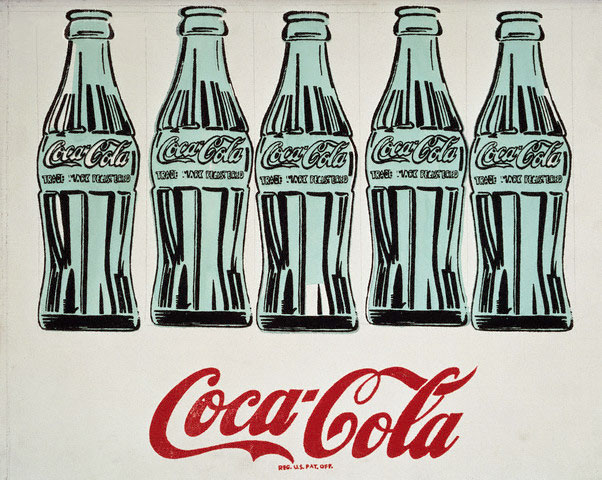
Warhol rocking some killer shades
Andy Warhol will always be remembered as the pioneer of the Pop Art movement and for being one of the preeminent artists of the 20th century. He practically defined it. In a career that only spanned 58 years, Warhol was not only active in the arts scene but also dabbled in the film and music scenes. Warhol is also know for being a major figure in the counterculture
Early Life

Crude depiction about the involuntary muscle spasm caused by Chorea
Andy Warhol was born on August 26, 1928 as Andrew Warhola in Philadelphia, Pennsylvania. His parents were Slovakian immigrants. His father Andrew Warhola sr. was a construction worker while his mom, Julia, was a seamstress. At the age of 8, Warhol had Chorea, which is a potentially fatal disease that causes involuntary muscular twitching. Warhol was bedridden for several months and became an outcast at school. He grew very close to his mother and his mother gave Warhol his first drawing lessons. Warhol would later attend Carnegie Technical College, (now Carnegie Mellon,) graduating with a B.A. in pictorial design.
After college, in 1949, Warhol moved to New York.

Warhol’s ink drawings of shoes
Career
He was first recognized for his quirky ink drawings for shoe ads. Critics praised Warhol for the humor and wit of his drawings. My favorite is the “Checkmate,” where he inventively integrates the checkboard design and the Rook as the heel. Warhol’s approach to art was even evident in his early ink drawings. Unlike many others, Warhol accepts imperfection. Every stray mark, every unintended blemish, Warhol doesn’t erase them. He lets chance play a role in his art. As Warhol put it: “When you do something exactly wrong, you always turn up with something.”

Cambell’s Soup
In 1961 he coined the term “pop art,” which are paintings that feature common commercial goods. In 1962, he presented his famous paintings of the Campbell Soup Can. These works depicting everyday, ordinary objects greatly contrasted with the previous notion of art being something to capture the magnificent, capture the great. This created great unrest in the art scene. Some of Warhol’s other popular pop art paintings include his depiction of Coca-Cola bottles, vacuum cleaners, and hamburgers. These common items were also a great equalizer. Warhol had this to say about Coca Cola:

Warhol’s Coca-Cola
“What’s great about this country is that America started the tradition where the richest consumers buy essentially the same things as the poorest. You can be watching TV and see Coca-Cola, and you know that the President drinks Coca-Cola, Liz Taylor drinks Coca-Cola, and just think, you can drink Coca-Cola, too. A Coke is a Coke and no amount of money can get you a better Coke than the one the bum on the corner is drinking. All the Cokes are the same and all the Cokes are good. Liz Taylor knows it, the President knows it, the bum knows it, and you know it.”
-Andy Warhol

Warhol’s Marilyn Monroe
At the same time, Warhol was also obsessed with Hollywood and its celebrities. He painted Marilyn Monroe, Mick Jagger, and Elvis Presley in vivid color.

Mick Jagger

Eight Elvises
Perhaps because of his obsession with celebrities, Warhol became active a major player in the counterculture. In 1963, he opened an art studio that it gained the title of “the Factory” because it was like an assembly line of high-quality art. The factory attracted n eclectic band of artists, drug users, and socialites and around the same time, Warhol began to make films of them. His films were unusual for his conservative time because they almost always included nudity, drug use, same-sex relations, and transgender people. He wanted to show sexuality in its entirety. He wanted to shock the nation into sexual radicalism. He wanted to give voice and give light to a part of our society so long ignored and rejected, for Warhol was one of them. Though never confirmed, many biographers suspect that Warhol might have been homosexual and living in the years just before Stonewall Inn, Warhol’s films brought sexual deviation out from the shadows and into center stage and perhaps played an instrumental role in the fight for same-sex equality.
Warhol intersects many of the themes for this course, fulfilling the notion of Social Justice with his art and the notions of Morals and Norms and NYC characters in all their Diversity.
He fought for social justice in the way he portrayed his Coca Cola bottles or can of Cambell’s soup. One of the reasons why Warhol painted “pop art” was to show the idea that these items, Coca-Cola or soup is common to everyone: not just the poor drink Coca-Cola but the president does too and Marylin Monroe because materials transcend wealth. Materials also transcend sexuality and all people regardless of sexuality enjoy soup and Coke.
Furthermore, in terms of morals and norms and tackling the diversity of this nation, Warhol criticizes the social conservatism of his age. He questions the nationally accepted notion that marriage is only correct if its between a man and a woman, offering no room for deviation. Warhol tried and succeeded throwing all of this out the window. He presented the public with the ugly truth that they refused to acknowledge and with that he challenged the morals and norms of his society.
Bibliography
“Andy Warhol: Biography.” Biography.com, 6 June 2016. Web. Accessed 21 Nov. 2016.
“Andy Warhol: A Documentary Film.” PBS, 20 Sept. 2006. Web. Accessed 21 Nov. 2016.
Evans, C.T. and Schilling, K. “Andy Warhol.” Nova, 27 Nov. 2011. Web. Accessed 21 Nov. 2016.
Leong, Henry. “Chorea and Huntington’s Disease.” International Parkinson’s and Movement Disorder Society, n.d. Web. Accessed 21 Nov. 2016
“Warhol Timeline.” Tate Museum, n.d. Web. Accessed 21 Nov 2016.

